Do you need a roof replacement? Are you wondering what gets replaced or what you’re exactly paying for?
If so, you’re like most homeowners just starting the process, wondering why it costs so much and everything in between. I like to say a roof replacement is like putting a puzzle together; you simply put the right pieces in the right places.
However, the stakes are much higher because you’re looking at costly problems if just one piece is missing. So, it’s crucial that your roof replacement gets everything it needs.
For over 30 years, the team at Bill Ragan Roofing has taken pride in providing transparent information to help homeowners avoid our industry’s bad reputation. Because of this, I’ll help you understand the pieces of the roofing puzzle.
Below is a breakdown of the 9 materials and components that must be included in every roof replacement.
1. Roof decking
Roof decking (also called roof sheathing) is the wooden foundation (plywood or planks) that the rest of your roof is installed on. There are two types of roof decking: plank decking and sheet decking.
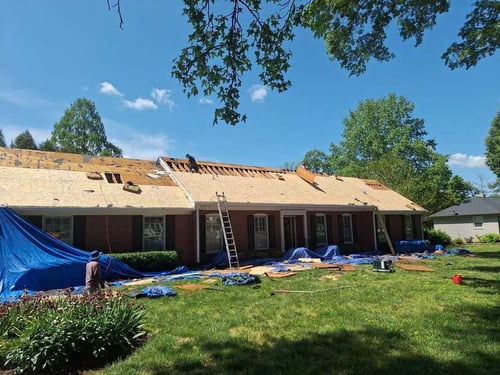
Plank decking is made up of elongated and rectangular wooden boards that are either 1x6 or 1x8, depending on the span of your rafters. Sheet decking (or sheathing) is literally flat sheets of wood (plywood or OSB) that are much wider than planks.
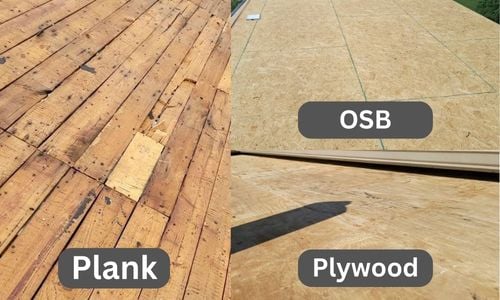
OSB (oriented strand board) is wood chips/strips compressed together to form a flat 7/16” sheet, while plywood comes in several different thicknesses (⅜”, ½”, ⅝”, and ¾”). Any rotten or compromised roof decking must be replaced before installation can begin.
However, your roofing contractor won’t know how much will need replacing until after the tear off process of your roof replacement.
2. Drip edge
Drip edge is metal flashing installed at the roof’s edges (eaves and rakes) to prevent water from getting underneath the roofing material and underlayment. Without it, your fascia board and roof decking’s edges will rot from prolonged exposure to water.
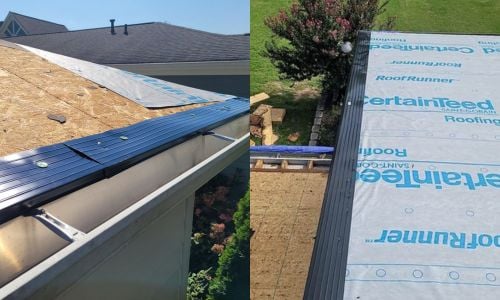
Drip edge is also required per building codes and must be installed correctly for your home to pass an inspection. Unfortunately, I see too many roofs without drip edge.
While it can be left off by laziness or lack of experience, bad roofers knowingly exclude it from their estimates to lower prices. If your roof estimate doesn’t have a line item for drip edge, I recommend finding another roofer altogether.
3. Underlayment
Roof underlayment is a felt or synthetic material installed directly over your roof decking before the roofing material is installed. Its purpose is to provide a layer of protection for your decking if water gets underneath your roofing material.
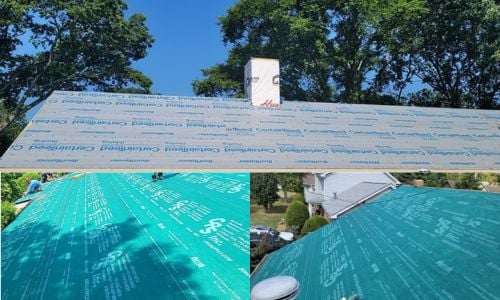
The two types of underlayment options are felt and synthetic.
Felt underlayment has been around the roofing industry longer than synthetic and comes in 15 lb. and 30 lb. rolls. Both types do the job, but 30 lb. felt underlayment is thicker, stronger, and less likely to tear than 15 lb.
Synthetic underlayment is made out of woven/spun polyethylene or polypropylene, which means it won’t hold moisture. It’s more durable, holds nails better, and repels water better than felt underlayment.
Felt isn’t a bad choice, but I recommend spending the extra money for the functionality and better water protection synthetic underlayment offers.
4. Ice and water shield
Like underlayment, ice and water shield is a waterproof membrane that protects your roof from ice and water damage if it gets under your roofing material. But unlike underlayment, it’s installed on/around certain problem areas that need added protection instead of over the entire roof deck.
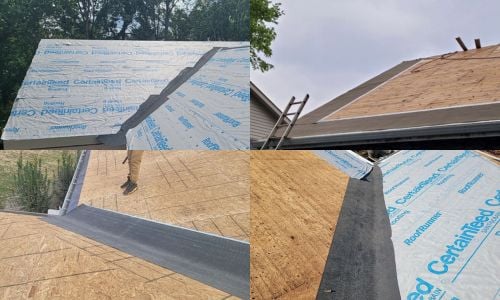
Ice and water shield is mainly installed in roof valleys, around penetrations, and on roofs with a 2/12, 3/12, or 4/12 pitch. But if you live above the snowline in the US, building codes also require two rows of it along the edges of your roof to prevent leaking from ice damming.
This is considered an "upgrade" in areas like Middle Tennessee to prevent ice damming leaks when we get heavy snowfall.
5. Roof flashing
Roof flashing is a metal material that directs water away from areas (walls, chimneys, roof valleys) where the roofing material butts up against something. It’s one of the most important components, and you’ll definitely have roof leaks without it.
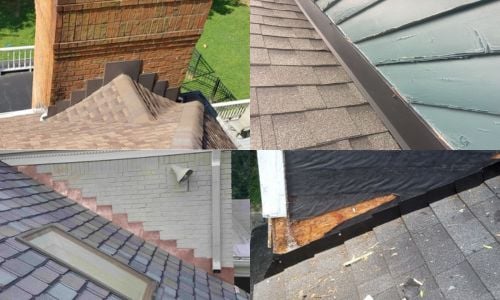
Roof flashing can be any metal type, but aluminum, steel, and copper are the most common metals. Steel is the most popular choice for residential roofing for its clean look, durability, and affordability.
But if you want an upgraded look, copper is well worth the investment if you have the budget. While roof flashing usually outlives the other components, I always recommend replacing it when it’s time for a new roof.
This is simply to prevent future problems and ensure everything installed on your roof is the same age.
6. Roofing material
Your roofing material is the top layer that makes up the bulk of the roof system you see from the outside. There are plenty of options, but the most popular residential roofing materials are asphalt shingles, standing seam metal roofing, cedar shake roofing, synthetic roofing, or slate roofing.
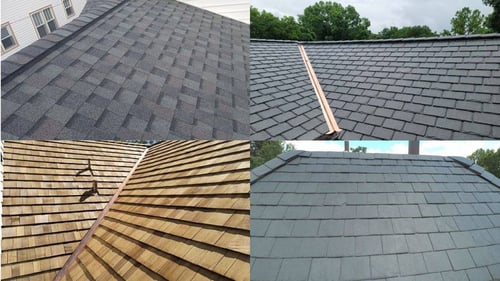
The one you choose greatly impacts your new roof's cost, aesthetic, lifespan, and warranty options. That’s why it’s important to do the research to ensure you pick the right one for you and your budget.
7. Ridge capping
Ridge capping is installed where two slopes meet to completely seal your roof system at the very top. It will be made of the same material as the main roofing material, except that it’s pre-bent to form perfectly on a roof’s ridge.
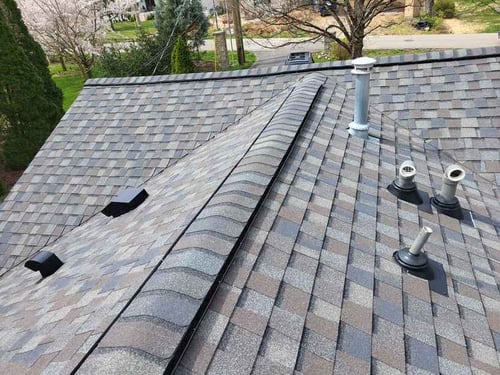
No matter which material you choose, your roof needs the associated ridge capping. Like drip edge, some roofing contractors try to avoid using proper ridge capping to keep their costs low.
For example, some roofers try installing 3-tab shingles at the ridge instead of a manufacturer's ridge capping on asphalt shingle roofs. This keeps costs down, but it will lead to a roof leak because they’re not meant to be used this way.
8. Roof vents
Roof vents allow your attic and home to breathe properly by pulling fresh air through intake vents before pushing it out of exhaust vents. You have plenty of options, but it depends on the type of ventilation system (active and passive) you have or want.
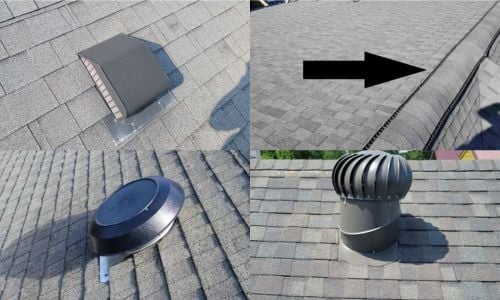
For an active ventilation system, the most common options are turbine vents, power vents, ridge vents with a baffle, or solar-powered vents. For a passive ventilation system, you’ll have static vents (box vents), ridge vents without a baffle, or gable-end vent.
While certain vents are better for certain roof styles, I recommend an active ventilation system for performance reasons. But no matter which system or vent type, it’s crucial that your attic is ventilated properly.
If it isn't, your roof’s life will be cut drastically short and your energy bills will be higher.
9. Pipe boots
A pipe boot (also called roof boot) is a type of flashing that goes around the base of the pipes coming out of your roof. Without them, water leaks down the pipes into your attic and home.
.jpg?width=500&height=281&name=PipeBoot%20(2).jpg)
Depending on the roofing material and type of pipe, pipe boots can be synthetic rubber, plastic, lead copper, etc. While you have these options, the most common type of pipe boot used on roofs today is a synthetic rubber called neoprene.
Just know that neoprene pipe boots will need replacing every 10 years or so once cracks form. However, they’ll be cheaper than copper (or another metal), more durable than plastic, and won’t attract animals like lead.
What do you need to consider before a roof replacement?
Now you know the 9 materials that must be included in your roof replacement. If your roof is missing even one, you’ll be looking at roof leaks in the future.
So, use this list while looking at your estimate to ensure everything your roof replacement needs is included before signing. However, learning what gets replaced is just a small piece of the information you need to know when getting a new roof.
After all, a roof replacement is a large and expensive home improvement project. The last thing you want is to be taken advantage of by a bad roofer or make the wrong decisions.
That’s why I wrote another article breaking down the things every homeowner needs to consider before replacing their roof.
Check out 7 Things to Consider Before a Roof Replacement to start the process with the right mindset and information needed for the best experience possible.



